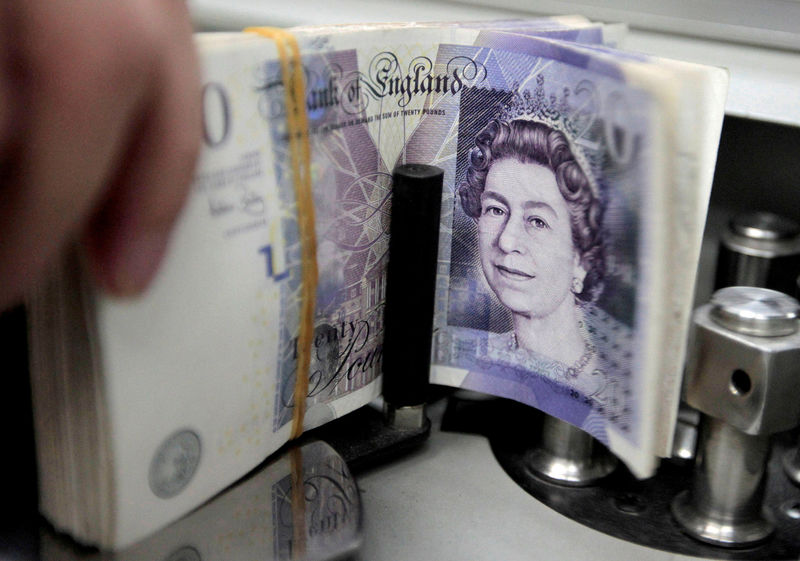By Tom Finn
LONDON (Reuters) - The pound fell on Wednesday, slumping below $1.29 for the first time in almost a year, in a selloff fueled by investor concern that Britain will crash out of the European Union without a trade deal.
London-based traders said investors had moved to hedge against the currency's going into free fall if Britain drops out of the EU with no deal in less than eight months' time.
Sterling was down against the euro (EURGBP=D3), dollar
Analysts said the pound was also hurt by a growing realisation, after the Bank of England's monetary policy meeting last week, that interest rate increases were likely to be as limited as one a year and contingent on a smooth Brexit.
Investors appear to view a no-deal Brexit as a growing possibility, especially after Britain's Trade Minister Liam Fox suggested over the weekend that the likelihood of a no-deal outcome is as high as 60 percent.
"A lot of companies can't wait for the [Brexit] negotiations outcome in October, so of course are trying to hedge against a drop in the pound," said Christophe Barraud, an economist at Market Securities brokerage in Paris.
Sterling slumped half a percent against the euro to below 90 pence (EURGBP=D3), its weakest since the middle of November.
The pound also fell below $1.29 for the first time since August 31 2017.
The BoE raised interest rates from crisis-era lows last week but the pound didn't benefit. Few saw the increase as a vote of confidence in the economy with so much political uncertainty ahead.
"Some are thinking in the market that the BoE raised in order to given them ammunition to cut rates in the face of a no- deal [Brexit]," said Neil Jones, head of hedge fund FX sales at Mizuho Bank. "The next move [by the central bank] could be a cut rather than another hike..."
Recent gains by the euro and the dollar have also hurt the pound.
British Prime Minister Theresa May will discuss Brexit with the EU's 27 other leaders at an informal summit in Austria next month and meet with EU leaders again in October to try to seal deals on the terms of Britain's withdrawal.
"We remain bearish on the pound in the short term until the Brexit mess is out the way and look for the currency to enter a $1.27-1.28 range before the leaders' summit in September," said Nomura strategist Jordan Rochester.
The pound has fallen more than 10 percent since mid-April versus the dollar.
Traders are now preparing for Friday's reading of second-quarter British economic growth numbers to give the pound some possible relief.
So-called risk reversals have risen this week to their highest levels since March 2017, indicating demand for puts has risen versus calls, according to option market pricing for three, six and nine-month periods.

Puts are an option to sell an asset and calls the right to buy an asset.